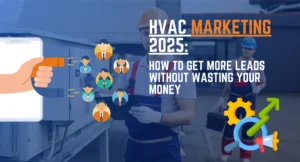Introduction
The Importance of Proof in Construction
In the construction industry, reputation is everything. Clients don’t just want promises — they want proof that you can deliver high-quality work, on time and within budget. While referrals and word-of-mouth still play a role, the majority of today’s clients begin their search for contractors online.
What a Construction Company Portfolio Really Does
That’s why your construction company portfolio is one of the most valuable assets your business can have. It’s not just a gallery of photos; it’s a carefully curated showcase of your skills, expertise, and accomplishments. A strong portfolio gives potential clients the confidence to choose your company over competitors, because it shows — not just tells — the story of your work.
Why Case Studies Matter Too
But a portfolio on its own isn’t enough. To truly establish authority, you need case studies alongside it. While the portfolio demonstrates what you’ve done, case studies explain how you did it. They provide context, highlight your problem-solving skills, and illustrate the tangible results you achieved for your clients. Together, a construction company portfolio and detailed case studies create a powerful combination that attracts leads and builds long-term trust.
What You’ll Learn in This Article
In this article, we’ll explore:
- Why every construction company needs a portfolio.
- The role of case studies in building credibility.
- Best practices for presenting your work online.
- SEO benefits of showcasing your projects.
- Common mistakes to avoid.
- Future trends in digital project presentation.
By the end, you’ll understand exactly how to create a construction company portfolio that not only looks impressive but also drives real business growth.
Why Every Construction Company Needs a Portfolio
A construction company portfolio isn’t just a nice-to-have — it’s a must-have in today’s digital marketplace. When potential clients are deciding which contractor to hire, they’re essentially asking themselves one critical question: “Can I trust this company to deliver?”
Your portfolio answers that question before you even speak to them. Here’s why it matters:
Proof of Expertise and Credibility
Any construction company can say they build quality projects, but showing evidence is what sets leaders apart. A well-designed construction company portfolio demonstrates your expertise across different project types — whether that’s residential builds, commercial developments, or industrial facilities.
When prospects see photos, project details, and outcomes, they’re more likely to believe in your capabilities. A polished portfolio essentially acts as a visual resume for your business.
A Competitive Differentiator
In most markets, construction is a highly competitive industry. Two or three companies may offer similar services at similar price points. What often tips the scale in your favor is a strong construction company portfolio that highlights:
- The quality of your craftsmanship.
- The diversity of your projects.
- The scale and complexity of builds you’ve successfully completed.
Clients compare multiple contractors online, and the company with the most compelling portfolio usually wins the bid.

Building Trust Through Transparency
Construction projects involve significant financial investment. Clients want reassurance that they’re hiring a team that can be trusted. By showing real photos of your work — instead of stock images — your construction company portfolio builds transparency. Including client testimonials or short stories alongside projects makes it even stronger, as it shows that real people have trusted you with their investments.
A Silent Salesperson Working 24/7
Unlike word-of-mouth referrals or sales pitches, your construction company portfolio is always available. Prospects browsing your website at 10 p.m. can view your work, read about your projects, and begin forming trust before they ever call you. In that sense, your portfolio functions as a silent salesperson, converting interest into inquiries even while your team is busy on the job site.
Case Studies vs. Portfolios: What’s the Difference?
When showcasing your work online, many construction companies use the terms portfolio and case study interchangeably. While they complement each other, they serve very different purposes. Understanding the difference — and using both effectively — is what sets apart a basic website from a client-converting powerhouse.
What a Construction Company Portfolio Is
A construction company portfolio is essentially a curated gallery of your past projects. It’s highly visual, giving potential clients a snapshot of your capabilities. A good portfolio answers the question:
“What kind of projects can this company handle?”
Typical features of a portfolio include:
- High-quality images or videos of completed projects.
- Basic project details like type (residential, commercial, industrial), size, or location.
- A short description highlighting the scope of work.
Think of it as your visual proof — quick, direct, and impactful.
What a Case Study Is
A case study, on the other hand, tells the story behind the project. Instead of just showing an image, it provides depth and context. A well-written case study explains:
- The client’s problem or challenge.
- The specific solutions your company provided.
- The process and methods used.
- The measurable results achieved (time saved, budget efficiency, client satisfaction).
This narrative demonstrates not only what you built, but how you approach challenges and deliver solutions.
Why You Need Both
A portfolio grabs attention — but case studies seal the deal. Together, they answer both of the client’s biggest questions:
- Can you do the kind of work I need? (Portfolio)
- Can I trust you to handle my project successfully? (Case Study)
By combining a construction company portfolio with detailed case studies, you provide the visual impact of your work alongside the credibility of your process.
4. Key Elements of a Strong Construction Company Portfolio
Not all portfolios are created equal. Many construction companies make the mistake of throwing together a few project photos without context. To stand out, your construction company portfolio needs to be strategic, structured, and designed with both clients and search engines in mind.
Here are the essential elements:
High-Quality Images and Videos
Visuals are the cornerstone of a portfolio. Invest in professional photography (or at least high-resolution images) of your projects. Whenever possible, include before-and-after photos to clearly demonstrate the transformation. Video walkthroughs or drone footage can add an even stronger impact.
Organized by Service Type or Project Category
Clients don’t want to scroll endlessly. They want to find examples relevant to their needs. Categorize your portfolio by service type (e.g., residential, commercial, industrial) or by specialty (e.g., roofing, remodeling, electrical).
A well-organized construction company portfolio shows the breadth of your work and makes it easier for prospects to find what they’re looking for.
Project Details That Add Context
Photos alone don’t tell the whole story. Each portfolio entry should include:
- Project type: Residential remodel, office build-out, retail construction, etc.
- Location: City or region (which also helps local SEO).
- Timeline: Start and completion dates.
- Scope of work: What your company was responsible for.
- Challenges overcome: Briefly mention unique obstacles or innovations.
This level of detail builds transparency and authority.

Testimonials or Client Quotes
Adding a short testimonial next to a project instantly boosts credibility. Clients trust what other clients say more than what you say about yourself. Even a two-sentence quote like, “They finished ahead of schedule and under budget — highly recommend!” adds immense value.
Mobile-Friendly Layout
Since many clients browse from their phones, your portfolio should be mobile-optimized. Images must load quickly and look great on small screens. Avoid layouts that require excessive zooming or scrolling.
Search Engine Optimization (SEO)
Don’t forget to optimize your construction company portfolio for SEO.
- Use descriptive file names and alt text for images (e.g., “residential-kitchen-remodel-dallas.jpg”).
- Include location keywords in project descriptions.
- Add schema markup where possible to highlight project details in search engines.
This ensures your portfolio not only impresses visitors but also attracts them in the first place.
Consistency and Regular Updates
A portfolio is not a “set it and forget it” feature. Update it regularly with new projects to show that your company is active and growing. Outdated portfolios give the impression that you’re not engaged or keeping up with industry demand.
How to Write Effective Construction Case Studies
Case studies are the storytelling side of your construction company portfolio. They provide depth, context, and a behind-the-scenes look at how your company solves problems and delivers results. Writing case studies that resonate requires more than just describing the project — you need to structure them in a way that speaks directly to potential clients.
Step 1: Define the Client’s Problem
Every project begins with a challenge. Maybe a homeowner needed a full kitchen remodel within a tight budget, or a commercial client needed an office build completed before their lease started. Clearly outlining the problem makes the case study relatable and sets the stage for your solution.
Example: “Our client, a retail store owner in Dallas, needed a full shop renovation completed in just six weeks to align with their grand opening date.”
Step 2: Showcase Your Process
Once you’ve defined the problem, explain how your company approached it. This section demonstrates your expertise and methodology. Focus on the steps you took, the materials you used, and any unique strategies your team implemented.
Tip: Use visuals like progress photos or time-lapse videos to make this section engaging.
Step 3: Highlight the Solution and Results
The results are what prospects care about most. Show how your work solved the client’s problem and delivered measurable benefits. Results can include:
- Completed project on time or ahead of schedule.
- Cost savings due to efficient processes.
- Improved aesthetics, functionality, or compliance.
- Client satisfaction or repeat business.
Whenever possible, include numbers. For example: “The project was completed two weeks early, saving the client $15,000 in overhead costs.”
Step 4: Add Testimonials or Client Quotes
Nothing adds credibility like the client’s voice. A testimonial such as, “Rynox Digital Construction exceeded our expectations by completing the project ahead of schedule without compromising quality” makes the case study much stronger.
Step 5: Keep It Clear and Concise
While detail is important, avoid overwhelming readers with technical jargon. Use plain language that anyone — even those outside the construction industry — can understand.
Why Case Studies Are Powerful for SEO
Case studies also provide SEO value. Each case study can be optimized for specific project-related keywords like “commercial office build in Houston” or “residential kitchen remodel in Austin.” This allows your construction company portfolio to attract local, high-intent traffic while showcasing your expertise.
6. Where to Showcase Your Portfolio on Your Website
Even the best portfolio won’t help if it’s hidden or hard to find. Strategic placement of your construction company portfolio across your website ensures that potential clients see your work at the right moment in their decision-making process.
Dedicated Portfolio Page
Every construction website should have a dedicated portfolio page that acts as a central hub for all projects. This page should:
- Be clearly labeled in the main navigation (“Our Work” or “Portfolio”).
- Display projects in an organized grid or gallery format.
- Allow filtering by project type, service, or location.
- Include links to individual case studies for visitors who want more detail.
Service Pages Integration
If a visitor is reading about your roofing services, it’s powerful to show related roofing projects right on that page. Embedding examples from your construction company portfolio into service pages gives prospects immediate proof of expertise.
Example: On a “Commercial Roofing” service page, include a carousel of 3–4 completed roofing projects with links to full case studies.
Homepage Highlights
Your homepage is prime real estate. Including a small showcase of featured projects — perhaps your most recent or most impressive — gives new visitors a quick snapshot of your capabilities. Use a call-to-action like “View Full Portfolio” to drive them deeper into your site.
Blog Integration
Case studies can also live in your blog. Each case study can be published as a blog article optimized for SEO, with images and storytelling. This gives you extra visibility in search engines while keeping your content fresh.
Calls-to-Action Around Your Portfolio
Don’t just show projects — use them to drive conversions. Add CTAs like:
- “See more of our construction company portfolio.”
- “Request a quote for a project like this.”
- “Talk to us about your upcoming build.”
By pairing your work with a clear next step, your portfolio becomes a direct lead-generation tool.
Optimize for Mobile
Just like the portfolio itself, its placement needs to be mobile-friendly. Ensure images load fast and navigation to the portfolio page is easy on smaller screens. Most clients will be browsing from their phones, especially when searching locally.
SEO Benefits of a Construction Company Portfolio
Your construction company portfolio isn’t just a visual showcase — it’s also a powerful tool for search engine optimization (SEO). When structured correctly, it can help you attract more qualified visitors, rank higher in local searches, and build long-term online visibility.
Optimizing for Local Search
Most clients hire contractors in their local area, so ranking in location-based searches is essential. By adding location details to your portfolio entries — such as city names, neighborhoods, or regions — you give Google more context to rank your site for queries like “residential remodeler in Houston” or “office construction company near me.”
Example: Instead of listing a project as “Office Renovation,” describe it as “Office Renovation in Dallas, TX for ABC Corporation.”
Long-Tail Keyword Opportunities
Case studies and portfolio entries provide a natural way to target long-tail keywords that service pages might not cover. For example:
- “Custom kitchen remodel in Austin TX”
- “Commercial warehouse construction project in Phoenix”
- “Modern office build-out in downtown Chicago”
These highly specific searches often bring in prospects who are further along in their decision-making process — meaning they’re more likely to contact you.
Image SEO for Better Rankings
Your construction company portfolio relies heavily on visuals. Each photo is an opportunity for SEO if you optimize it correctly:
- Use descriptive file names (residential-home-remodel-dallas.jpg).
- Add keyword-rich alt text (Residential home remodeling project in Dallas by [Company Name]).
- Compress images for faster load times (a ranking factor for Google).
Optimized images can also appear in Google Image Search, giving you an additional channel for visibility.
Enhanced Engagement Signals
When prospects browse your portfolio, they spend more time on your site, click through multiple pages, and engage with your content. These engagement signals (longer session duration, lower bounce rates) send positive indicators to Google that your site is valuable and relevant.
Backlink Opportunities
Outstanding portfolios and case studies are often shared by clients, local media, or industry blogs. If a regional business journal or design publication features one of your projects, you’ll gain high-quality backlinks — one of the most important ranking factors in SEO.
A Continuous Content Engine
Every new project you complete is a chance to add content to your website. Regularly updating your construction company portfolio signals to search engines that your site is active and current, which helps with rankings. It also gives you more opportunities to target fresh keywords.
8. Common Mistakes in Portfolios and Case Studies
While portfolios and case studies are powerful tools, many construction companies miss out on their full potential by making common mistakes. Avoiding these pitfalls ensures your work not only looks good but also works effectively to generate leads.
Using Stock Photos Instead of Real Projects
Clients want authenticity. Stock photos may look polished, but they erode trust the moment a prospect recognizes them. Always use real images from your completed projects, even if they’re not “magazine-perfect.”
Not Updating the Construction Company Portfolio Regularly
An outdated portfolio sends the wrong message. If your most recent project listed is from three years ago, prospects may assume you’re no longer active or successful. Regular updates show that your company is busy and in demand.
Skipping the Details
A simple photo with the label “Residential Build” doesn’t tell clients much. Without context — location, scope, timeline, or client goals — prospects can’t fully appreciate your capabilities. Every portfolio entry should tell a mini-story.
Overloading With Technical Jargon
Case studies that sound like engineering reports may impress insiders but confuse clients. Avoid heavy jargon and explain your process in clear, client-friendly terms. Focus on outcomes: time saved, money saved, problems solved.
Forgetting Mobile Optimization
More than half of web traffic now comes from mobile devices. If your construction company portfolio is difficult to view on a phone — images cut off, slow loading, awkward navigation — prospects will leave quickly.

Weak or Missing Calls-to-Action
Portfolios should inspire action, but many companies fail to add a clear next step. Don’t just show a project — end each entry with a CTA like “Request a quote for a similar project” or “See more of our work.”
Ignoring SEO Basics
Even visually impressive portfolios can underperform if they’re not optimized for search engines. Missing alt tags, generic titles, or oversized image files can all hurt rankings and slow down your site.
Future Trends in Showcasing Construction Work
The way construction companies present their work online is constantly evolving. As technology advances and client expectations grow, your construction company portfolio must adapt to stay competitive. Here are the top trends shaping the future of digital project showcases.
Virtual and Drone-Based Project Tours
Instead of static photos, many companies are now using drone footage and 360° virtual tours to provide immersive experiences. These tools allow prospects to “walk through” a completed project online, giving them a better sense of scale, detail, and craftsmanship.
Interactive Before-and-After Sliders
Before-and-after comparisons are incredibly persuasive, especially for remodeling and renovation projects. Interactive sliders let users drag across an image to see the transformation in real time, making your construction company portfolio more engaging.
Video Storytelling
Short project highlight videos that combine visuals, client testimonials, and voiceovers are gaining popularity. They’re more dynamic than photos alone and are highly shareable on social media, extending the reach of your portfolio.
Sustainability and Green Building Highlights
More clients are prioritizing eco-friendly practices. Future-ready portfolios will showcase projects that feature sustainable materials, energy-efficient solutions, or certifications like LEED. A dedicated “Green Projects” section can help attract environmentally conscious clients.
Client Access and Interactive Dashboards
For larger projects, some construction companies are experimenting with client dashboards integrated into their websites. These portals allow clients to track progress, view milestones, and even download project documents. While not necessary for every contractor, this trend shows how digital tools can deepen client engagement.
AI-Powered Portfolio Management
Artificial intelligence is starting to play a role in content management. Imagine an AI tool that automatically generates case studies from project data or recommends which portfolio items to feature based on visitor behavior. This kind of automation will make it easier to keep portfolios fresh and tailored to audience needs.
10. Conclusion
In today’s digital-first construction industry, your portfolio is far more than a collection of photos — it’s the foundation of your credibility and a critical driver of new business. A strong construction company portfolio, paired with detailed case studies, gives potential clients the proof they need to choose you over competitors.
By investing in high-quality visuals, structured storytelling, SEO optimization, and regular updates, you transform your portfolio into a lead-generation engine. Avoiding common mistakes and embracing emerging trends ensures your showcase remains relevant and compelling.
At the end of the day, your projects are your best salespeople. They speak louder than ads, louder than cold calls, and louder than generic claims. Showcasing them effectively is how you build trust, win contracts, and grow your business.
If you’re ready to elevate your online presence, let Rynox Digital create a portfolio and website that highlight your projects, attract more clients, and set you apart as a trusted leader in the construction industry.
Showcase your work the right way — partner with Rynox Digital






